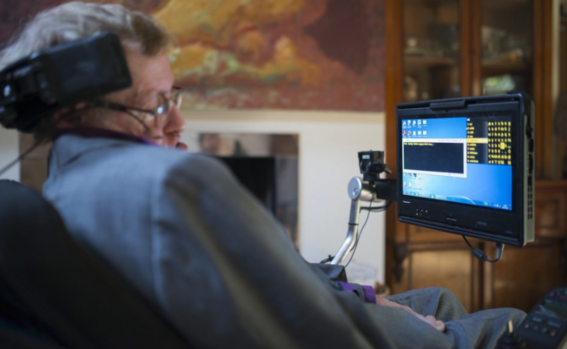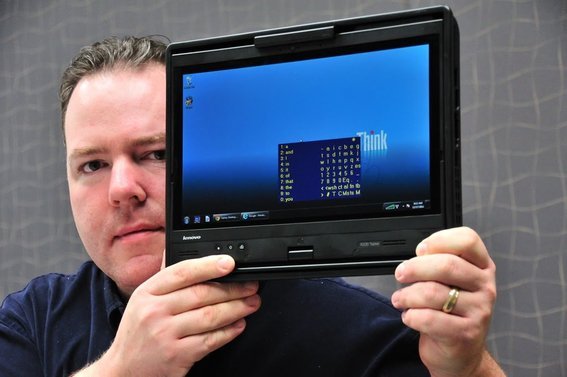How did the computer that returned the voice to Stephen Hawking work?

Hawking lost his ability to speak in 1985, after having a tracheotomy after a trip to Genoa.
Stephen Hawking was diagnosed with amyotrophic lateral sclerosis (ALS) at age 21, a rare degenerative disease that atrophies the body causing muscle paralysis. Little by little, the cells of the nervous system responsible for the motor functions of the organism die: the patients of ALS lose control of their arms and legs, followed by their hands and the rest of the muscles, even the force of the neck that makes it possible to maintain head up; everything until the whole system collapses and death inevitably arrives.
For Hawking the diagnosis was a devastating blow, but not fatal. She was about to get married, had a promising career as a physicist and a whole life ahead of her. The specialists did not give him more than three years of life expectancy: he lived another 55 years. In return, he was immobilized for life and dependent on the care of his loved ones.
Hawking lost his ability to speak in 1985, after having a tracheotomy after a trip to Genoa. It was then that Intel Corporation decided to work hand in hand with Hawking to build a system in his wheelchair that not only gave him back his voice, but also radically improved his life.
At the beginning of 2014 and with the progression of his disease invading a large part of his muscles, Intel presented the last -and final- wheelchair of Hawking. The open source system that gave voice was baptized as ACAT (Assistive Context-Aware Toolkit) and according to Intel, was composed of three parts: an infrared sensor or camera that detects facial movements, the interface that selects letters to form words and the software (developed by SwiftKey) that predicts what the user is writing.

The sensor was sensitive to the movement of a muscle in his right cheek, able to detect the gestures voluntarily made by the author of A Brief History of Time to move through the keyboard (1988). The device was connected to Hawking's lenses and worked as a kind of cursor, reflecting the information of each facial gesture on the keyboard that Hawking saw on his screen.
The software also had a predictive writing system designed especially for him, which "learned" from the vocabulary, written documents and other phrases of the physicist to anticipate what he intended to express with a high degree of accuracy.
On its official site, the section "My Computer" describes the characteristics of your computer from the words of the physicist himself:
«I can select a key by moving my cheek to stop the cursor. My movement is detected by a switch mounted in my glasses. This switch is my only interface with the computer. ACAT has a word prediction algorithm developed by SwiftKey, trained with my books and other writings, so I only have to press the first couple of letters of each word before I can select the whole word. When I have a complete sentence, I can send it to my voice synthesizer ».
The device helped Hawking to express himself until the last of his days. The research and tests carried out by Intel to manufacture the device (and the different prototypes) are open access for doctors and engineers who are investigating how to improve the mobility of patients with motor diseases such as ALS, which the last great genius of the 20th century maintained. for more than 55 years, most of his life.